Name Charles Byrne | Role Giant | |
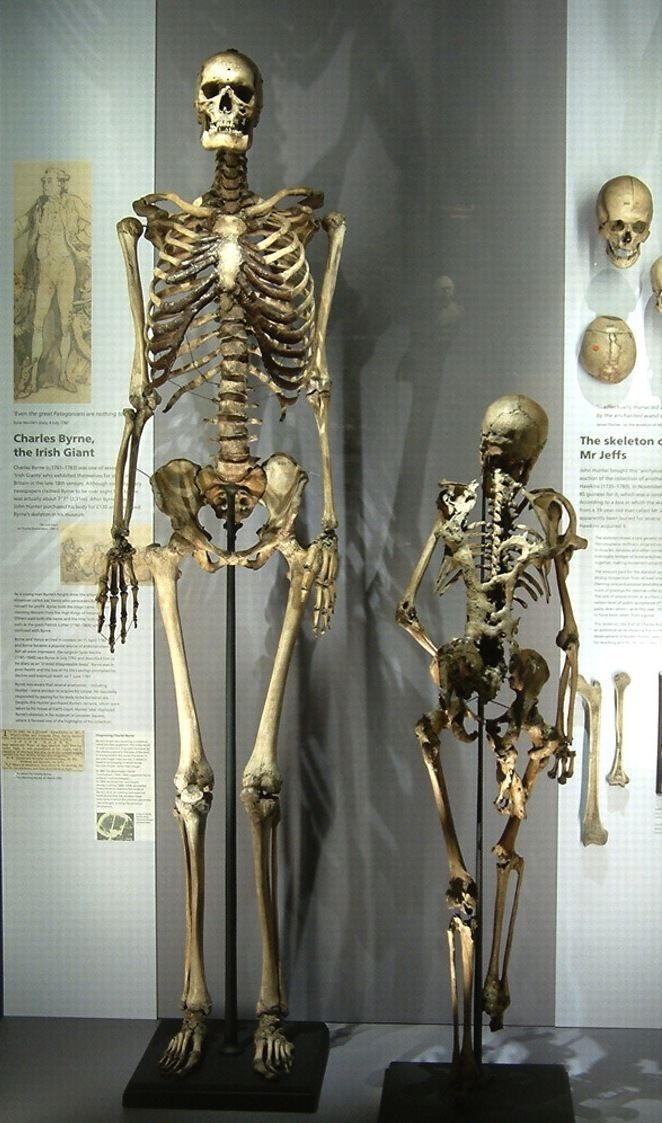 | ||
Died June 1, 1783, London, United Kingdom | ||
Charles byrne the irish giant the original documentary
Charles Byrne (1761–1783) or "The Irish Giant", was a man regarded as a curiosity or freak in London in the 1780s. Byrne's exact height is of some conjecture. Some accounts refer to him as being 8 ft 2 in (2.49 m) to 8 ft 4 in (2.54 m) tall, but skeletal evidence places him at just over 7 ft 7 in (2.31 m).
Contents
- Charles byrne the irish giant the original documentary
- Charles byrne the irish giant opening sequence
- Biography
- After death
- Medical condition
- Legacy
- References
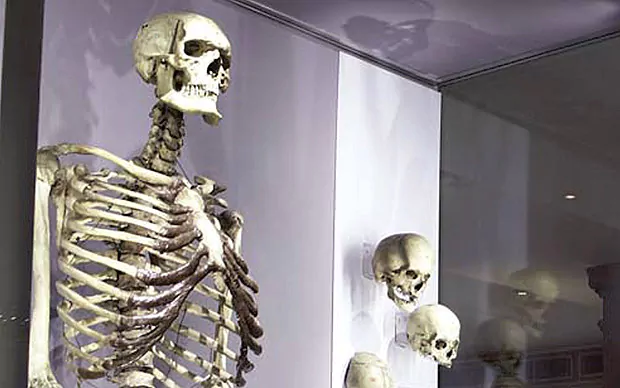
Charles byrne the irish giant opening sequence
Biography
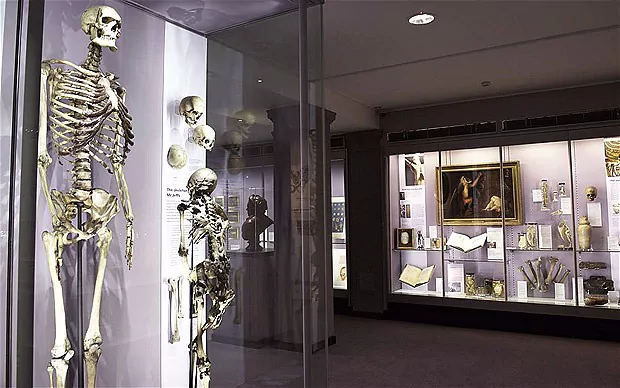
Byrne's family lived in a remote part of northeast County Tyrone, Ireland, called Littlebridge, not far from the shores of Lough Neagh. It is said that Byrne had been conceived on top of a haystack, and that this was the cause of his great height. (This explanation is fanciful; it was actually due to an undiagnosed medical condition.) Little is known of Byrne's family other than that his parents were ordinary people, and that they were not unusually tall.
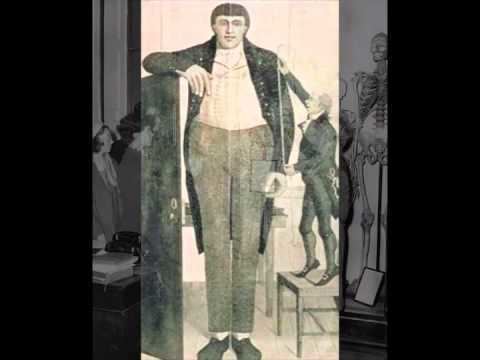
By his late teens Byrne had decided to set off for Britain in pursuit of fame and fortune. Landing first in Scotland, he became an instant success. As Eric Cubbage has recounted, Edinburgh's "night watchmen were amazed at the sight of him lighting his pipe from one of the streetlamps on North Bridge without even standing on tiptoe."
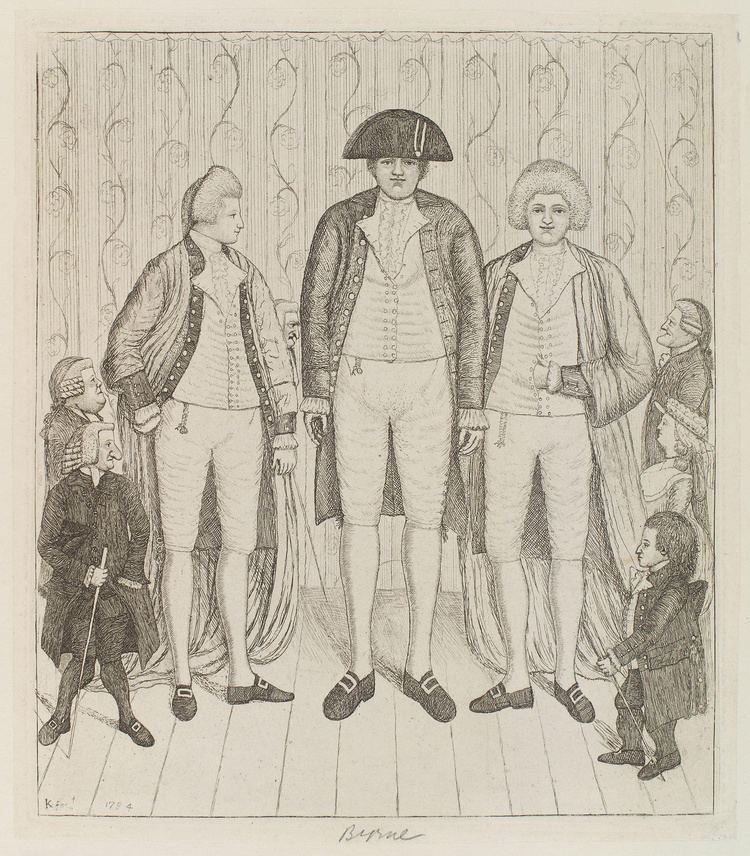
His celebrity spread as he made his way down northern England, arriving in London in early 1782, aged 21. Here he entertained paying audiences at rooms in Spring Garden-gate, then Piccadilly, and lastly Charing Cross. He was the toast of the town; a 6 May 1782 newspaper report bears out: "However striking a curiosity may be, there is generally some difficulty in engaging the attention of the public; but even this was not the case with the modern living Colossus, or wonderful Irish Giant."

His gentle, likeable nature inspired an immense public fondness, and his celebrity life was constantly splashed across the newspapers of the day. "The wonderful Irish Giant...is the most extraordinary curiosity ever known, or ever heard of in history; and the curious in all countries where he has been shewn, pronounce him to be the finest display of Human nature they ever saw". By mid-1782 he had inspired a hit London stage show called Harlequin Teague, or the Giant's Causeway.
Unfortunately, Byrne's great height was the result of a then undiscovered growth disorder (known today as acromegaly), and his health declined sharply in his twenty-second year. He was also pickpocketed in this period while drinking in his local pub, the Black Horse; Byrne's worldly earnings were on his person in the form of banknotes, and were stolen. The loss of his earnings interacted with his failing health, and two months later Byrne passed away at his lodgings in June 1783, aged 22.
After death
Byrne was living in London contemporaneous with the pre-eminent surgeon and anatomist of the time John Hunter. Hunter had a reputation for collecting unusual specimens for his private museum, and as Byrne's health deteriorated he feared that Hunter wanted his body for dissection (a fate reserved at that time for executed criminals) and probable display. Byrne had made express arrangements with friends that when he died his body would be sealed in a lead coffin and buried at sea. But his burial wishes were thwarted and his worst fears realised when John Hunter arranged for Byrne's cadaver to be snatched on its way to sea. Hunter then reduced Byrne's corpse to its skeleton and four years later put Byrne's skeleton on display in his Hunterian Museum, now located in the Royal College of Surgeons. His 2.31-m (7 ft 7 in) skeleton still resides in the Hunterian Museum at the Royal College of Surgeons in London.
In 2011, calls were made in the British Medical Journal by Len Doyal, emeritus professor of medical ethics at Queen Mary, University of London, and Thomas Muinzer (currently a law lecturer in the University of Stirling) to put an end to the unethical display of Byrne's skeleton at the Hunterian Museum and for the skeleton to be buried at sea "as Byrne intended for himself”. The article argued that Byrne's DNA has been taken and can be used in further research but that it was now time to respect Byrne's burial wishes and attempt to morally rectify what happened to him.
A public poll conducted on the British Medical Journal's website over December 2011—January 2012 in response to the article "Should the Skeleton of 'the Irish Giant' Be Buried at Sea?" by Doyal and Muinzer offered people the chance to vote on what they thought should happen to Byrne's remains. Doyal and Muinzer reported: “On the last count that we saw before voting ceased, 55.6% (310) voted for burial at sea; 13.17% (74) for removal from display and being kept for research; and 31.55% (176) for the status quo."
The British Medical Journal article was widely reported and the resulting swell of public support for the campaign forced The Royal College of Surgeons to formally consider whether it should release Byrne's skeleton, the showpiece of their Hunterian museum, in February 2012. They decided to continue the exhibit.
Since then, a further academic article has been published in the International Journal of Culture and Property Law which deals with the legal issues raised by the display of Byrne's skeleton and contains new fieldwork carried out in Byrne's native townland of Littlebridge. The article again calls for the release of Byrne's skeleton from his captor's museum on moral grounds and for a burial to be carried out in Byrne's homeland at, or as near as possible to, the Giant's Grave, a local site where folk tradition suggests Byrne wished to be buried. The article explains that as the legal system stands, people have no legal power to direct what will happen to their remains following death, and so rely on their loved ones to carry out their burial wishes so that they are buried with respect and dignity.
In May 2015, the then Mayor of Derry Martin Reilly wrote to the Museum's trustees advocating for "the importance of respecting the wishes of Mr Byrne in relation to his burial". In March 2017, Dr. Thomas Muinzer appeared in an interview on the NPR program "All things considered" for a piece entitled "The saga of the Irish Giant's Bones dismays Medical Ethicists." A change. org petition started by Richard Mckee of Oregon in the United States to honor the dying wishes of Charles Byrne to be buried at sea has so far garnered 364 signatures.
Medical condition
The American surgeon Harvey Cushing studied Byrne's bones in 1909 and found that Byrne had had a pituitary tumour based on an enlarged pituitary fossa. In 2011, British and German researchers determined the cause of Byrne's gigantism. They extracted DNA from Byrne's teeth and found that he had a rare mutation in his AIP gene that is involved in pituitary tumours. The researchers also found that four contemporary families living in Northern Ireland which have a history of related pituitary disorders also carried this mutation. The researchers inferred that Byrne and these families had a common ancestor about 57 to 66 generations ago (1425 to 1650 years ago).
Legacy
Author Hilary Mantel wrote a fictionalised novel of his life in The Giant, O'Brien. The plot of the novel focused on the battle between the revolution of science and the ways of poem and song. O'Brien (Byrne) was portrayed as a man whose faith was in tales of kings and the little people, while his polar opposite John Hunter was portrayed as at the dawn of the scientific age, destroying all that is old and cherished. It also mentions that O'Brien (Byrne) was related to another Irish giant in Patrick Cotter O'Brien of Cork, who exhibited himself shortly after the death of Byrne, stating that he was 8' 7" in height. An exhumation of his bones in 1972 showed that his true height was 8' 1". The book also mentions a sort of kinship with two other Irish giants known simply as 'The Brothers Knipe' who both stood 7' 2" each. They were recognised by the Guinness Book of World Records as the tallest identical twins in history. In 2010, poet Moyra Donaldson from Northern Ireland published the anthology Miracle Fruit which featured a poem inspired by Charles Byrne called 'The Skeleton of the Great Irish Giant'.
Author Tessa Harris also made him one of the main characters in her novel The Dead Shall Not Rest, which examines the beginnings of forensic science, anatomy and surgery. The book, which is well referenced, emphasises the difficulties that anatomists of the time had in gaining access to bodies to dissect, and the resulting illegal trade in dead bodies.
He is mentioned in Ch. 32 of Charles Dickens' novel David Copperfield, to illustrate the enormousness of an umbrella: "But her face, as she turned it up to mine, was so earnest; and when I relieved her of the umbrella (which would have been an inconvenient one for the Irish Giant), she wrung her little hands in such an afflicted manner; that I rather inclined towards her."
